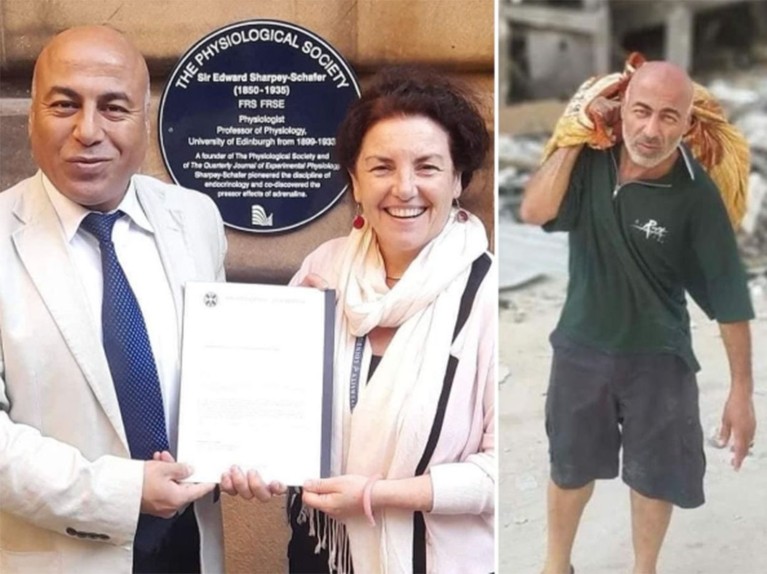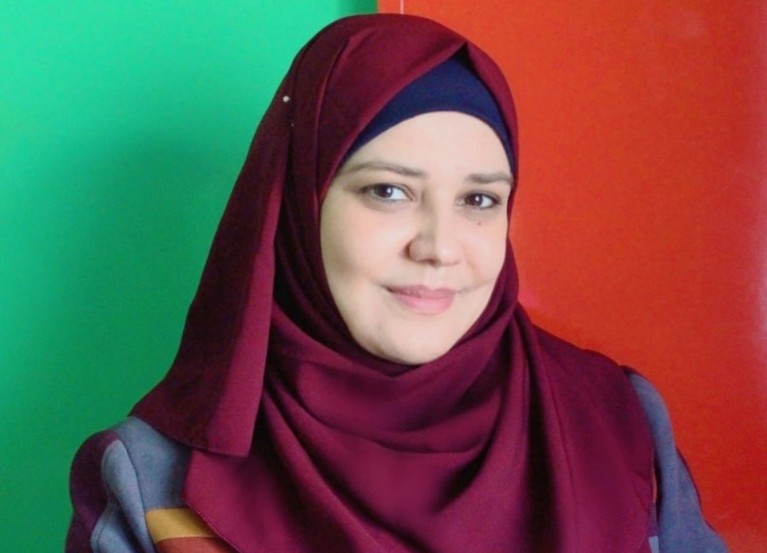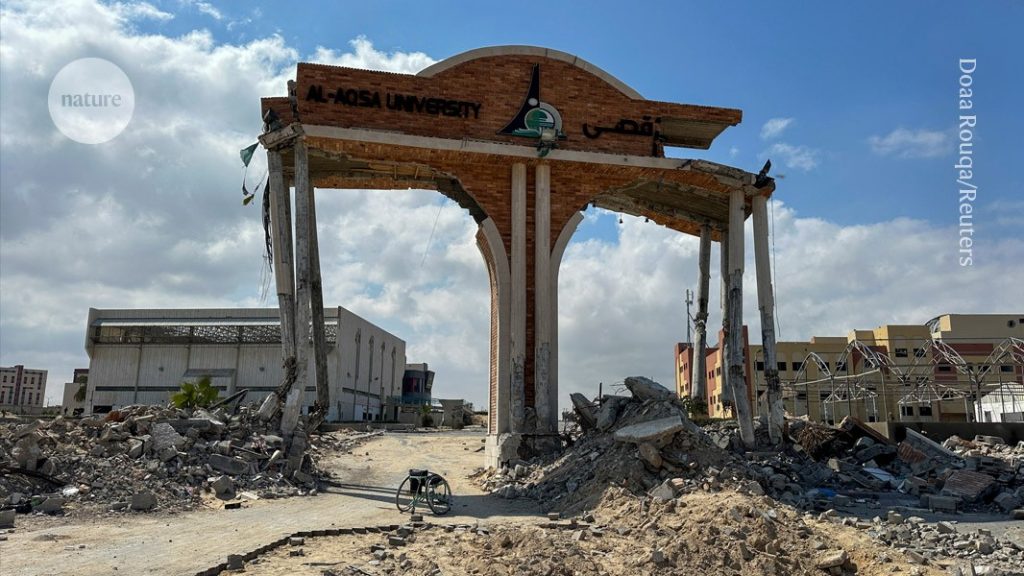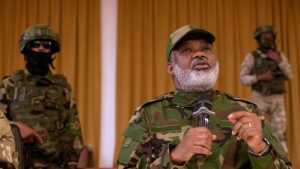The 42-day ceasefire between Hamas and Israel, which took effect on 19 January, provides a vital opportunity to begin to address the devastation from the 15-month war, scientists there have told Nature. The ceasefire might yet prove temporary, and whether or not it holds, the long-term future for the territory and its citizens remains highly uncertain.
While daily bombing is suspended, international organizations can complete a detailed assessment of Gaza’s water, food, health and infrastructure needs, the researchers say.
“There’s a need to document what has been happening here in Gaza and to publish [the results] with other researchers worldwide,” says neuroscientist Khamis Elessi, head of the Evidence-Based Medicine Unit at the Islamic University of Gaza, who now spends most of his time treating injured people at the Ahli Arab hospital.
This knowledge is needed to guide those undertaking recovery and rebuilding in Gaza, during the ceasefire and when the war is over. “Research is critical [at this stage]” adds Samer Abuzerr, who studies water-borne diseases at the University College of Science and Technology in Gaza.
Elessi and Abuzerr are among more than ten scientists who spoke to Nature for this article. These scholars managed to continue their research, and some even published their results, despite facing homelessness, recurrent displacement and a dearth of food and basic necessities.

Neuroscientist Khamis Elessi (left) receiving an award in 2022 from Liz Grant, director of the Global Health Academy, University of Edinburgh and (right) during the current war.Credit: Khamis Elessi
“The Palestinian academic community’s efforts to continue their work under such difficult circumstances are a testament to their unwavering commitment to education and knowledge,” says Aya ElMashharawi, an online-learning researcher at the University College of Applied Sciences in Gaza.
On 7 October 2023, some 1,200 people were killed when Hamas attacked Israel. Some 47,500 people have been killed as a result of Israel’s retaliation. These figures are according to data reported to the United Nations Office for the Coordination of Humanitarian Affairs.
Researchers and specialists in humanitarian assistance estimate that 90% of Gaza’s 2.2-million population is homeless. Systems ensuring food, supplies, water, sanitation, education, health care, energy and the broader economy have been destroyed or are critically endangered, requiring rebuilding.
Another urgent need, the researchers say, is removal of debris from bomb damage. According to a preliminary assessment by the UN Environment Programme published in June, for every square metre of the Gaza Strip, there is an estimated 100 kilogrammes of debris, such as concrete, iron and steel, as well as residue from exploded and unexploded bombs, asbestos and human remains.
“More than 97% of Gaza’s water comes from a groundwater aquifer,” says Ahmed Hilles, head of the National Institute for Environment and Development in Gaza. “The porosity [of the aquifer’s layers] is very high, so the potential of [groundwater] contamination is also very high,” he adds.
Universities, too, will need to be rebuilt. Fifteen out of Gaza’s 21 universities, university-colleges and community-colleges have been either severely damaged or destroyed, according to September data from the UN science and cultural agency UNESCO.
In a written response sent to Nature, an Israel Defense Forces representative explained that, as part of its efforts to dismantle Hamas’s military capabilities, “there has been an operational need, among other things, to strike or raid buildings” where Hamas “placed some of its terror infrastructure”. The representative added: “Hamas systematically uses public buildings that are supposed to be used for civilian purposes only, including educational institutions and universities.”
Sewage in the streets
Even before the war, just 10% of Gazans had access to safe water. That is now 4%. Thirty per cent have access to a sewage network, compared with 70% pre-war, according to a November report of Gaza’s reconstruction needs1 authored by Hilles who also lectured at Al-Azhar University in Gaza. “There is sewage water collected in the streets. Repairing the sewage system is urgent, so people will not get water-borne diseases,” Elessi adds.
Around half of Gaza’s 36 hospitals are not functioning, and the rest are only partially operational, according to the World Health Organization. Gazans are experiencing high rates of diarrhoea, respiratory infections, skin rash, scabies and viral hepatitis, according to a study co-authored by Abuzerr, published last November2.
“We have 350,000 patients with chronic diseases who have not been followed for the last 16 months. We have 11,000 cancer patients,” says Elessi. “They are all in pain and deteriorating because there is no therapy nor referral abroad. These patients should be dealt with urgently.”
‘Expedite reconstruction’
ElMashharawi studied the impact of displacement on almost 200 staff members at her university. “Establishing temporary shelters and expediting the reconstruction of houses is a top priority,” she says.

Aya ElMashharawi: “I remain committed to my academic journey.”Credit: Aya ElMashharawi- UCAS
“Four floors above us were bombed, killing 30 people,” says El Mashharawi, who is now in the Nuseirat refugee camp. “It was an incredibly terrifying experience that I can’t even describe, but by the grace of God, we survived,” she recalls.








